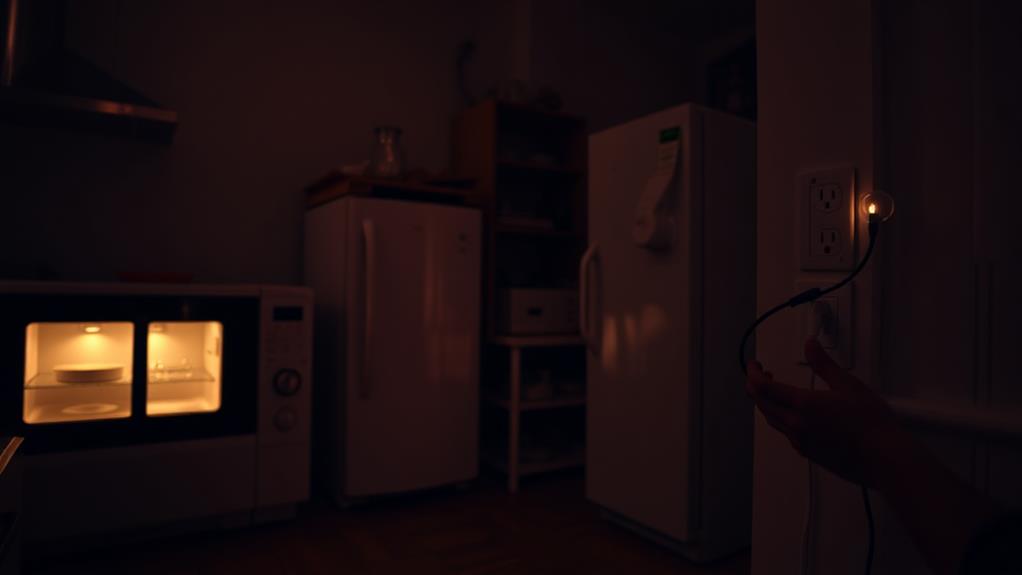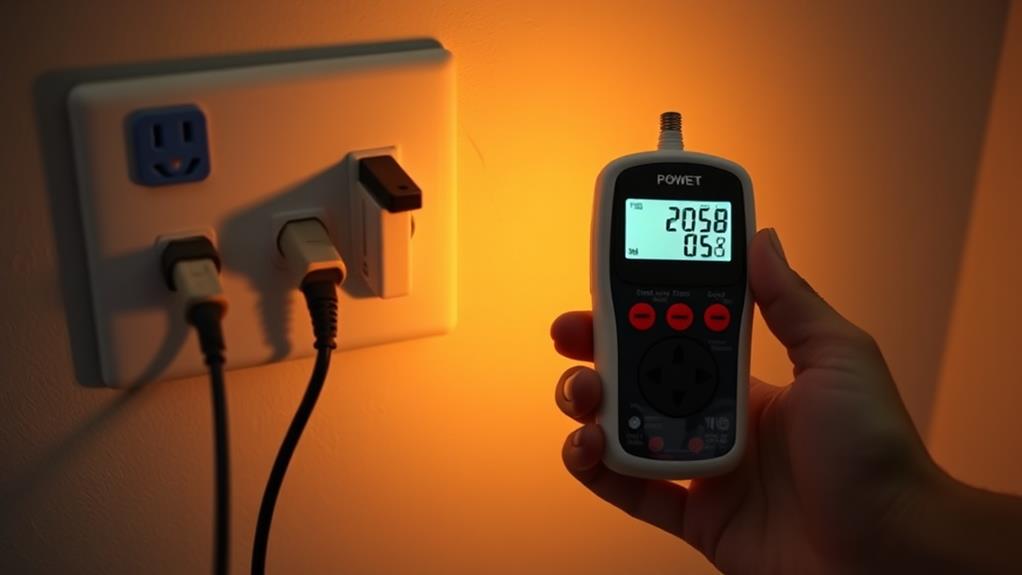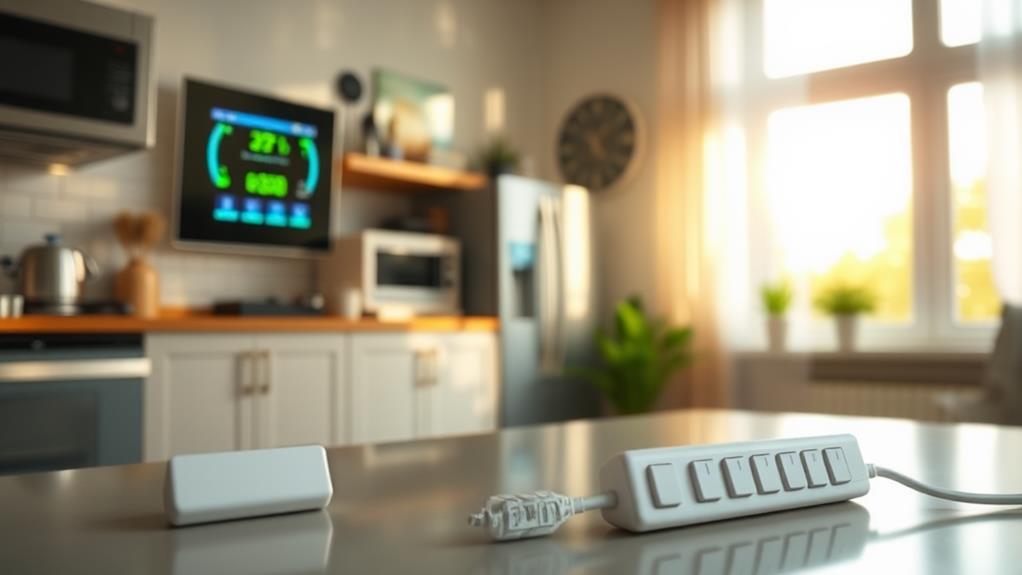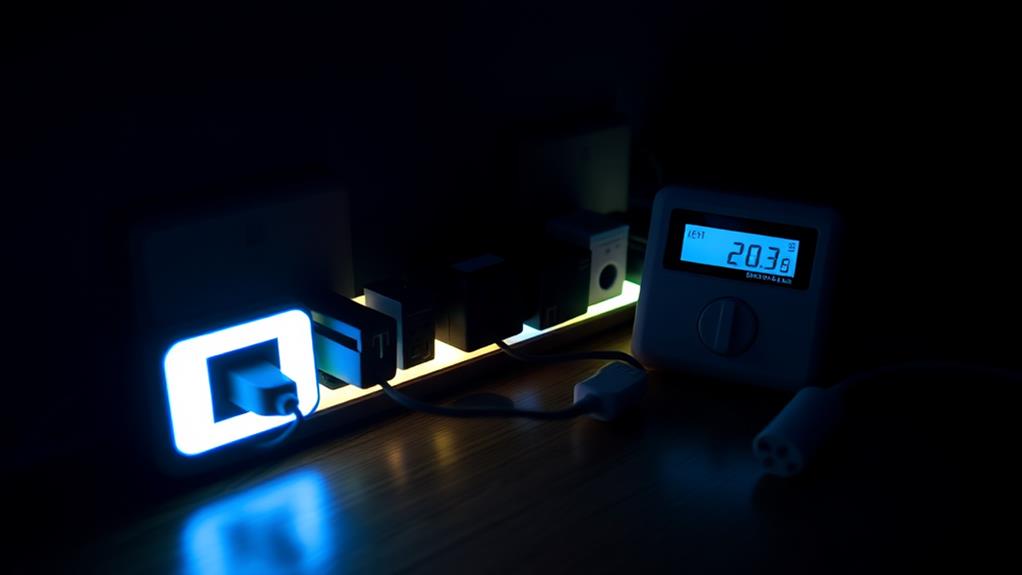You're unknowingly wasting energy and money through standby power consumption. Electronic devices and appliances continue to draw power even when not in use, silently increasing your electricity bills and contributing to environmental damage. Common culprits include TVs, computers, gaming consoles, and kitchen appliances with digital displays. This vampire energy can account for up to 10% of your home's electricity usage, costing you $100-$200 annually. To reduce these hidden costs, unplug devices when not in use, invest in energy-efficient appliances, and use smart power strips. By understanding and addressing standby power, you'll unlock significant savings and reduce your environmental impact.
Understanding Standby Power

In our increasingly connected world, standby power has become an invisible energy drain in homes and offices. You've likely encountered standby power without realizing it. It's the energy consumed by electronic devices and appliances when they're not in active use but still plugged in. This "vampire" or "phantom" power keeps devices ready for instant activation or maintains minimal functions like clocks and remote sensors.
Common culprits include TVs, computers, gaming consoles, and kitchen appliances. While each device may only draw a small amount of power individually, the cumulative effect can be substantial. In fact, standby power can account for up to 10% of your home's electricity usage.
To identify standby power consumers, look for devices with remote controls, external power supplies, continuous displays, or charging functions. These features often indicate that the device is drawing power even when switched off. Understanding which appliances contribute to standby power is the first step in reducing this hidden energy cost. By recognizing the sources of standby power in your home or office, you can take targeted actions to minimize its impact on your energy consumption and bills.
Common Standby Power Culprits
While many devices contribute to standby power consumption, some are particularly notorious energy vampires. Your television, cable box, and gaming consoles are among the worst offenders. These entertainment systems often draw significant power even when they're not in use, as they maintain constant connections and update software in the background.
In your kitchen, appliances like coffee makers, microwaves, and toaster ovens can silently drain energy. Their digital displays and internal clocks require constant power to function. Similarly, your computer and its peripherals, such as printers and speakers, continue to draw power when in sleep mode or turned off but still plugged in.
Mobile device chargers left plugged in without a device attached are another common culprit. They'll continue to consume small amounts of energy, which can add up over time. Smart home devices, including voice assistants and connected thermostats, also contribute to standby power usage as they remain alert for voice commands or maintain Wi-Fi connections. By identifying these common standby power culprits in your home, you'll be better equipped to tackle unnecessary energy consumption and reduce your electricity bills.
Measuring Your Standby Power Usage

Knowledge is power when it comes to reducing standby energy consumption. To effectively tackle this issue, you'll need to measure your home's standby power usage. Start by unplugging all devices and turning off all lights. Take a reading from your electricity meter, then wait for an hour and record another reading. The difference between these readings represents your home's base power consumption.
Next, use a plug-in power meter to measure individual devices. Simply plug the meter into an outlet, then connect your device to the meter. It'll display the device's power consumption in both active and standby modes. Pay special attention to electronics, appliances, and chargers that remain plugged in most of the time.
Keep a log of your findings, noting which devices consume the most standby power. This data will help you prioritize which items to unplug or replace with more energy-efficient models. Remember, even small amounts of standby power can add up over time, so don't overlook seemingly insignificant devices. By measuring and tracking your standby power usage, you'll be better equipped to make informed decisions about reducing your energy consumption and lowering your electricity bills.
Financial Impact of Vampire Energy
Vampire energy can silently drain your wallet, costing you hundreds of dollars annually. The financial impact of standby power consumption is often underestimated, but it adds up quickly. On average, American households spend $100-$200 per year on vampire energy alone. This seemingly small amount can accumulate to thousands of dollars over the lifetime of your appliances and electronics.
To understand the financial impact, consider your electricity rate. If you're paying $0.12 per kilowatt-hour and your standby power consumption is 50 watts, you're spending about $52 per year on devices that aren't even in use. Multiply this by the number of gadgets in your home, and you'll see how quickly the costs escalate.
The impact extends beyond your personal finances. Collectively, standby power accounts for 1% of global CO2 emissions, contributing to higher energy production costs and potentially increased utility rates. By reducing your vampire energy consumption, you're not only saving money on your electricity bill but also helping to mitigate broader economic and environmental costs associated with excessive energy production and distribution.
Environmental Consequences of Phantom Load

The environmental toll of phantom load extends far beyond individual households. When you consider the cumulative effect of millions of devices constantly drawing power, you'll realize the significant impact on our planet. This unnecessary energy consumption leads to increased greenhouse gas emissions, as power plants burn more fossil fuels to meet the demand.
You're contributing to air pollution, water pollution, and climate change every time you leave a device in standby mode. The production of excess electricity also strains natural resources, leading to habitat destruction and biodiversity loss. It's not just about the energy wasted in your home; it's about the entire lifecycle of energy production and distribution.
Moreover, the manufacturing of additional power plants and infrastructure to support this phantom load further exacerbates environmental issues. You're indirectly supporting the extraction of raw materials, transportation emissions, and industrial processes that harm ecosystems.
Strategies to Reduce Standby Power
Equipped with an understanding of standby power's environmental impact, you're now ready to take action. Start by identifying the main culprits in your home. Common offenders include TVs, gaming consoles, computers, and chargers. Once identified, unplug these devices when not in use or use smart power strips to cut off their power supply automatically.
Invest in energy-efficient appliances with low standby power consumption. Look for products with the ENERGY STAR label, which indicates they meet strict energy efficiency guidelines. When purchasing new electronics, compare their standby power ratings to choose the most efficient options.
Utilize timers and smart home systems to control your devices' power usage. Set schedules for turning off equipment during periods of inactivity, such as nighttime or when you're away from home. Consider using smart plugs that allow you to remotely control and monitor your devices' power consumption through smartphone apps.
Educate your family members or roommates about standby power and encourage them to adopt energy-saving habits. Make it a household policy to turn off and unplug devices when they're not in use, especially before going to bed or leaving for extended periods.
Smart Home Solutions

How can smart home technology help combat standby power waste? Smart home devices offer innovative solutions to reduce standby power consumption.
You can use smart power strips that automatically cut off power to devices when they're not in use. These strips detect when a primary device, like your TV, is turned off and then shut down power to connected peripherals.
Smart plugs are another useful tool. You can control them remotely via your smartphone, allowing you to turn off devices even when you're away from home. Some smart plugs also monitor energy usage, giving you insights into which appliances consume the most standby power.
Home energy management systems take this a step further. They integrate with various smart devices in your home, providing centralized control and scheduling. You can set routines to power down non-essential devices during specific hours or when you're not at home.
Voice-controlled assistants like Amazon Alexa or Google Home can also help. You can use voice commands to turn off multiple devices simultaneously or create routines that automatically power down your home at night or when you leave for work.
Conclusion
As you're reading this, coincidentally, your home is likely consuming standby power. You've learned about the hidden costs and impacts of vampire energy, but now it's time to act. By implementing the strategies we've discussed, you'll slash your energy bills and reduce your carbon footprint. Remember, every small change counts. Next time you walk past that idle charger or unused appliance, you'll know exactly what to do.

